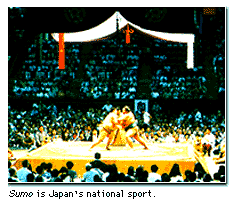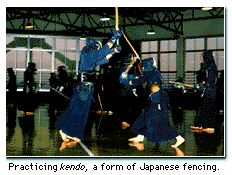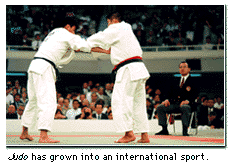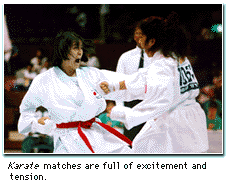 |
What are the features of traditional Japanese sports?
|
 |
 Sumo is a traditional Japanese sport that still enjoys immense popularity today. In sumo, two wrestlers face each other in a ring. The wrestler who brings his opponent down to the ground or pushes him out of the ring is the winner.
Sumo is a traditional Japanese sport that still enjoys immense popularity today. In sumo, two wrestlers face each other in a ring. The wrestler who brings his opponent down to the ground or pushes him out of the ring is the winner.
|
|
 Another traditional sport is kendo. In kendo, two fencers wearing protectors, including masks and chest guards, each hold a long bamboo sword and compete by attempting to strike the opponent's mask or chest with the sword.
Another traditional sport is kendo. In kendo, two fencers wearing protectors, including masks and chest guards, each hold a long bamboo sword and compete by attempting to strike the opponent's mask or chest with the sword.
Yet another is aikido, a martial art of self-defense in which an attack with bare hands or with a weapon, such as a sword or spear, is repulsed by utilizing the strength of the attacker against him or her.
|
|
 Judo, which is now part of the official sports program at the Olympic Games, is also a traditional sport. In judo, two wrestlers compete with various throwing and grappling techniques.
Judo, which is now part of the official sports program at the Olympic Games, is also a traditional sport. In judo, two wrestlers compete with various throwing and grappling techniques.
|
|
 Other traditional sports include karate, which came to Japan from China; Japanese archery, or kyudo, in which standing archers shoot arrows at a target with a long Japanese-style bow; and mounted archery, in which archers shoot at stationary targets from atop galloping horses.
Other traditional sports include karate, which came to Japan from China; Japanese archery, or kyudo, in which standing archers shoot arrows at a target with a long Japanese-style bow; and mounted archery, in which archers shoot at stationary targets from atop galloping horses.
Photos courtesy of Tokyo Metropolitan Government, Ministry of Foreign Affairs, Kodokan Judo Institute, and Japan Karate-do Federation. |

 |